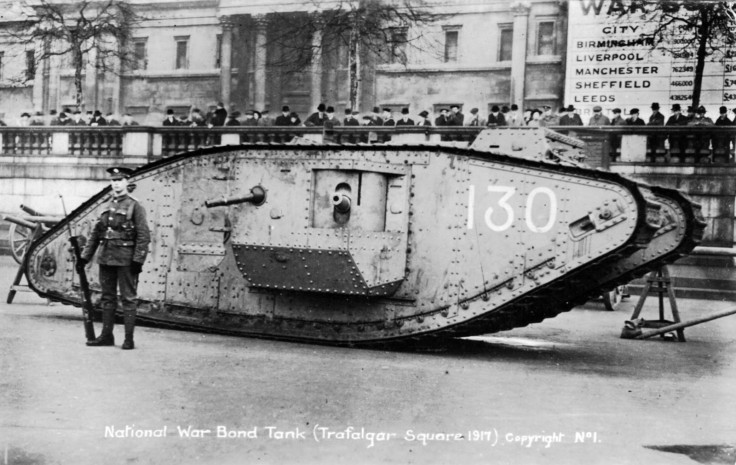Tank 100: WWI app marks centenary of the first deployment at Somme
App gives history buffs the chance to explore WWI tanks in both augmented and virtual reality.
A new app that uses both augmented reality and virtual reality to bring WWI military warfare to life has been launched to celebrate the 100th anniversary of the first ever tank attack, which took place during the Battle of the Somme.
The Tank 100 app, designed by online game developer Wargaming (creator of the World of Tanks video game) and historical app developer Ballista Digital, enables history buffs and military enthusiasts to experience a life-size model of a Mark I tank in augmented reality.
During the war, as a way to encourage the British people to invest more money into war bonds so funds could be used to build additional tanks, the UK government placed tanks in town squares all over the country.
The developers have sought to recreate this, by virtually placing the Mark I tank in 100 locations across the UK. Think of it as a sort of Pokemon Go for military buffs – the app utilises geo-fencing technology, so you need to be physically standing at one of the designated locations in order to be able to see the 3D model of the tank.
You can look at the tank from all sides, even underneath the tank. Then, when you're ready to look inside, you then put on a VR headset, and you can watch 360-degree videos of the interior, complete with a historian to explain what the various controls did.
The app is free and available to download for both iOS and Android devices, although the 360-degree videos can also be viewed here on a desktop computer.
The history of the world's first tank attack
Ever since Roman times, humans have made use of trenches dug in fields as a form of defensive fortification against enemies, and this method continued into WWI. The idea was that the armies would hide in the trenches for cover and build obstacles to deter the other side, while firing machine guns at each other.
The only way to gain ground during a battle was to run through a hail of gunfire to the other side. As the armies all largely had weapons that were impractical for offensive manoeuvres, this led to a stalemate between the Germans and the Allies, with the German army digging new defences much faster than the Allies could attack.
But then, on 15 September 1916, 77 days after the Battle of Somme started, the British brought out tanks for the first time in history. This changed warfare forever.
"There were lots of barbed wire and trenches you had to get across, so that was really where the idea of a tank came in. A tank was purely machinery to help protect these men, but also help them gain ground. Tanks today do cause a lot of damage, but when we talk about vehicles like the Mark I, in essence it was all about the ability to cross the obstacles," Richard Cutland, the head of Military Relations Europe at Wargaming, told IBTimes UK.
The Mark I only had between 10-12mm of armour and a top speed of 3.7 miles per hour. It featured tracks to help the tank navigate and cope with trenches, so it wouldn't get stuck in them, but it still frequently broke down during use. Influenced by naval designs, it featured vision slits, but it was still very hard to aim at targets accurately. A crew of eight manned the tank, and sometimes up to four people would be needed to drive it.
"It was incredibly slow. The first time it was used at the Somme, it was not particularly successful, but it did show the potential for tanks, and later on we went on to have battles where it proved its weight in gold," added Cutland, who has 30 years' experience serving as a tank commander with the British Army.
What happened to all the tanks?

After WWI, the UK government offered 265 tanks to the nation, and many were put on display. However not everyone wanted to see them, as they were a painful memory of the many lives lost in the war. Today, only one of the tanks still resides in its original location, at Ashford, Kent. Many of the other tanks have long since been scrapped, or are too old to work.
To commemorate where the Mark I would have originally stood in Trafalgar Square in 1916, the game developers succeeded in getting hold of an operational replica of the Mark 4 tank, which was used in the 2012 film War Horse, that could be moved and operated, and placing that at the location on Thursday 15 September 2016.
The Tank Museum in Bovington, Dorset, is holding a special event to commemorate the centenary of the first ever tank attack on Saturday 17 September, offering visitors the chance to climb inside a real Mark 4 tank, as well as rides in an M548 tracked armoured fighting vehicle, and a re-enactment of WWI.
© Copyright IBTimes 2024. All rights reserved.







